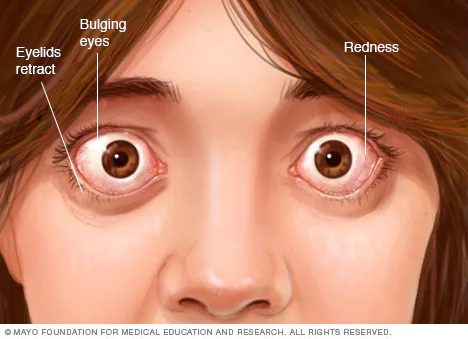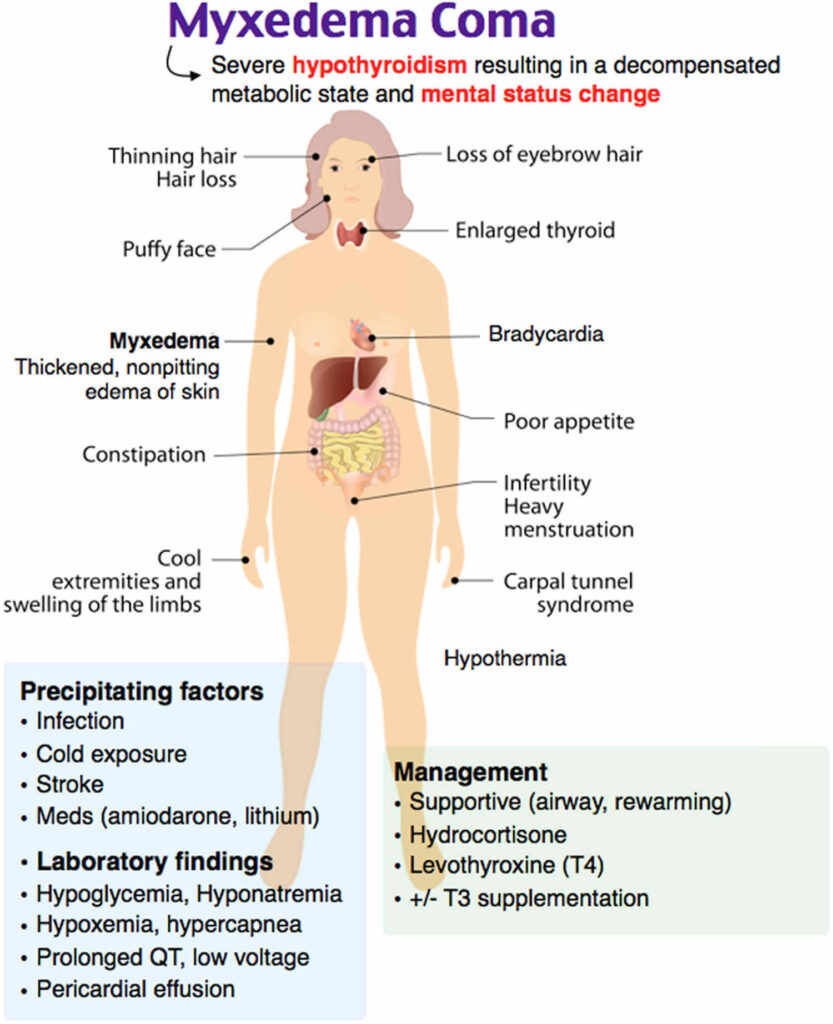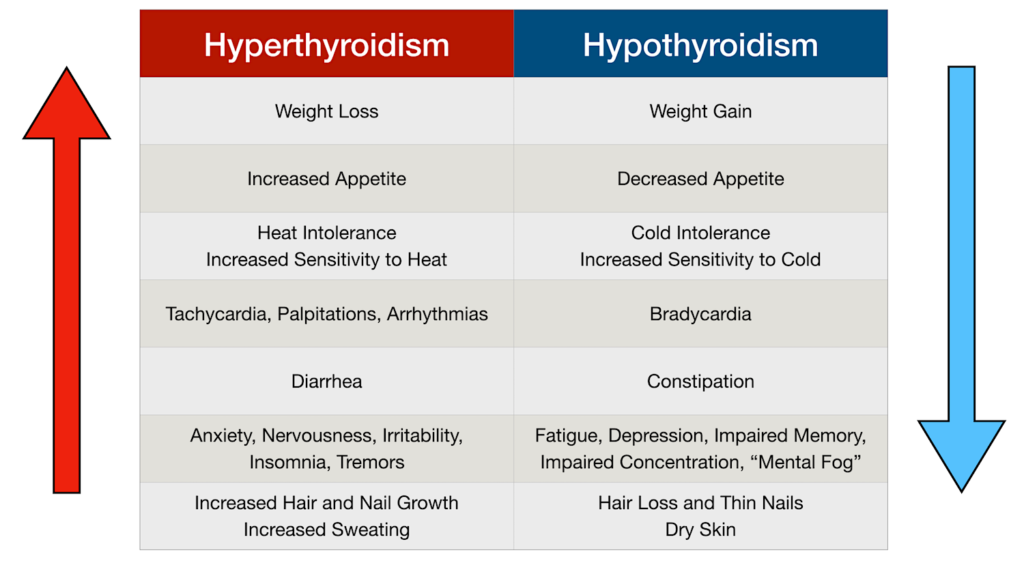Picture this: you’ve served your country, but now a silent battle rages within. Your thyroid – no bigger than a butterfly nestled at the base of your neck – can bring life to a standstill.
VA Disability Ratings for Thyroid Conditions

Your days once marched to the rhythm of duty and adrenaline; now they’re dictated by fatigue or an erratic heartbeat that won’t fall in line. It’s not just about health – it’s about reclaiming the control slipped through your fingers when this tiny gland went rogue.
I get it because I’ve been there, thumbing through pages of medical jargon trying to make sense of my symptoms and what they mean for my future. And here’s where things look up:
You’ll find clarity on how VA rates these conditions, from hyperthyroidism’s fiery dance to hypothyroidism’s sluggish waltz—and even cancer lurking in the shadows. Strap in: we’re diving deep into understanding service connections and claiming what’s rightfully yours.
VA Disability Ratings for Thyroid Conditions
When it comes to navigating the waters of VA disability ratings, thyroid conditions often stir up more questions than answers. Veterans face a sea of criteria and percentages that determine how their thyroid disorders—like hyperthyroidism or hypothyroidism—are rated by the VA.
Hyperthyroidism and Hypothyroidism Ratings

If you’re wrestling with an overactive thyroid gland (hyperthyroidism), including Graves’ disease, know that the VA rates this condition at 30% for six months following your diagnosis. On the flip side, an underactive thyroid (hypothyroidism) will also dock in at a 30% rating for the same time frame post-diagnosis. So why is this important? Because these conditions can impact everything from weight loss to heart rate—an unexplained slow heart could be telling signs doctors treat seriously.

Hypothyroid folks might notice fatigue sneaking up on them like fog rolling into a harbor; meanwhile, hyperthyroid individuals could find their heart racing as if they’ve just sprinted across deck in rough seas.
Myxedema Coma and Cancer Considerations

Dive deeper into those murky waters, and we encounter myxedema coma—a severe case of hypothyroid where your body basically throws out an SOS flare signaling full-blown crisis mode. If stabilized from such dire straits, you’ll see myxedema level hypothyroid given a lifesaving ring buoy: a 100% rating by the VA for six months after stabilization. But let’s talk about something even scarier lurking below surface-level health concerns—cancer.

The big C—as ominous as spotting sharks circling—is treated seriously when it comes to service connection benefits related to military service exposures like Agent Orange exposure or burn pits contact during deployment stints; here’s looking at you Vietnam vets. Service-connected thyroid cancer gets straight-up red carpet treatment with a shiny brass band playing ‘Hail to The Chief’: A resounding 100% VA disability rating while undergoing treatment.
Mayo Clinic provides insight into symptoms caused by hypothyroidism so veterans can better understand what signals their bodies may send.

A Heart Out Of Rhythm: An irregular heartbeat might be doing more than skipping beats—it could signal grave issues like autoimmune diseases or toxic effects stemming from flame retardants known as polybrominated diphenyl ethers which have been linked back to military environments.

Mysterious Weight Gain: When you’re packing on pounds without any clear reason, it’s confusing and can be quite concerning. It could be puzzling if you haven’t altered your eating or workout routines, yet the scale is still going up. So, what gives? There could be a number of hidden factors at play—from hormonal imbalances to underlying health conditions that need attention.
Key Takeaway:
Get a grip on VA disability ratings: Hyperthyroidism and hypothyroidism both start at 30% but can jump to 100% for severe cases like myxedema coma or cancer during treatment. Keep an eye out for symptoms like irregular heartbeats and unexplained weight gain—they’re clues that your thyroid might be off-kilter.
Understanding Thyroid Disorders in Veterans
Veterans carry their service’s weight, and sometimes this includes the onset of thyroid disorders. The battles may end on the field, but they can ignite a different kind within—the body’s own cells clashing against the thyroid gland.
Types of Thyroids Disorders Affecting Veterans

The enemy list is long when it comes to veterans’ health concerns including various types of thyroid conditions. There’s hyperthyroidism with its signature overactive thyroid symptoms caused by too much hormone production—think rapid heart rate and unexplained weight loss. Then there’s hypothyroidism where an underactive thyroid leaves troops feeling fatigued despite a full night’s rest; some might even see their scales tip with unexplained weight gain.
Military life doesn’t shy away from extremes, so why would these disorders? Toxic thyroid enlargement swells into view as a signpost for trouble ahead while nontoxic goiters quietly invade without that chemical signal flare. And let’s not forget autoimmune diseases like Graves’ disease hyperthyroidism or Hashimoto’s—a slow burn that can leave you cold in ways beyond temperature.
Causes Linked to Military Service
Diving deeper into what triggers these internal conflicts brings us face-to-face with past foes: Agent Orange exposure stands out among them, infamous for leaving a toxic legacy linked directly to thyrotoxicosis among those who served during Vietnam era conflict zones rife with this herbicide menace.

Burn pits have become another suspect in recent health concerns including both short-term issues and lingering effects years after duty has ended. They belch forth smoke laden heavy with polybrominated diphenyl ethers from flame retardants—all chemicals capable of causing hormonal chaos resulting in conditions occur such as altered heart rhythms or changes in metabolism leading up towards potential development of various forms of disease hyperthyroidism included graves’ which seem straight out an apocalyptic tale rather than reality our vets live through daily basis because military service often places personnel environments where they’re exposed myriad hazardous substances either known unknown time deployment only later manifest serious lifelong health problems back home soil far battlefields overseas territories alike sadly ironic isn’t?

Mayo Clinic details symptoms such as fatigue which are more than just signs—it screams hypothyroidism include fatigue at times when energy should be surging post-service lives demanding constant vigilance managing chronic condition no one signed up alongside oath taken protect country loved ones yet here we stand frontlines once again fighting invisible war within ourselves bodies betray
Key Takeaway:
Veterans grapple with thyroid disorders long after service, facing conditions like hyperthyroidism and hypothyroidism. These can stem from exposure to substances such as Agent Orange or burn pit chemicals during their military tenure.
Direct Service Connection vs. Secondary Service Connection
Veterans navigating the VA disability benefits landscape often encounter two crucial terms: direct service connection and secondary service connection. These concepts are pivotal in understanding how to secure the benefits you deserve, especially when it comes to thyroid conditions.

Establishing a Direct Service Connection
To establish a direct service connection for thyroid conditions, veterans must show clear evidence that their condition is linked to their military service. This might mean demonstrating exposure to certain chemicals or events during your time in uniform that could have triggered thyroid issues. The process can feel like finding a needle in a haystack—but it’s more about connecting the dots between your health concerns and your service history.

For instance, if you’ve been diagnosed with hyperthyroidism or hypothyroidism within six months of discharge and there’s an inkling of suspicion that military duty played its part—say hello to what may be considered Agent Orange exposure. It’s noteworthy that both these conditions are rated at 30% by the VA initially. And let’s not forget those who braved burn pits; they too could find themselves facing similar battles against toxic invaders attacking their thyroid glands.
Recognizing Secondary Service Connections

Moving beyond primary connections, we delve into secondary territory where things get interesting—and complex. Imagine one ailment cascading into another like dominos tumbling down; this is what happens with secondary connections. If you’re already recognized for a primary disability due to your valiant efforts in uniform but then develop say Graves’ disease because of it—that’s textbook secondary connection material right there.
A great example would be someone grappling with diabetes ascribed directly from their days dodging danger zones only later on life decides ‘hey why not toss some underactive thyroid drama into the mix?’ Suddenly weight gain isn’t just about overindulgence but potentially compensable thanks to indirect links back to Uncle Sam’s watchful eye during active duty years.

In summing up this labyrinthine journey known as establishing connections for thyroids gone awry post-service—we’ve covered quite some ground. Remember folks, whether fighting off foreign threats overseas or combating unseen enemies within our own bodies back home—it pays (quite literally) knowing which battlefronts yield rightful dues when it comes to securing benefits. Staying informed and proactive in managing thyroid health after service can lead to better outcomes and deserved support. So keep pushing forward, armed with knowledge, because understanding your rights and the paths available is key to navigating these complex waters successfully.
Key Takeaway:
Get the VA benefits you’ve earned by proving a direct link between your thyroid condition and military service, or show how it’s a secondary issue to an existing service-connected condition. Either way, connecting health issues with your time in uniform can pay off.
Agent Orange Exposure and Related Thyrotoxicosis
Veterans who served in Vietnam or other areas where Agent Orange was used may face a unique battle long after their service. One of the adversaries? An excessive thyroid, also known as thyrotoxicosis, may be a struggle faced by veterans who served in Vietnam or other areas where Agent Orange was used long after their service. But what’s the connection between this chemical exposure and your thyroid going haywire?
The Link Between Agent Orange and Thyroid Function

We know that Agent Orange exposure is associated with several health issues, but it’s only recently that studies have started to spotlight its role in triggering thyroid problems like thyrotoxicosis. Think about how delicate our endocrine system is – even a small disruptor can throw things off balance.
If you’re scratching your head wondering if those symptoms you’ve been chalking up to stress could be something more, consider this: an irregular heartbeat or unexplained weight loss might actually stem from toxic substances altering your body’s normal processes.
Symptoms Veterans Should Watch For
Hypervigilance isn’t just for combat zones; it applies to health too, especially when we talk about chemicals messing with our systems. Symptoms caused by an overactive thyroid include fatigue so crushing it feels like carrying full gear again, heart rate changes that would give any drill sergeant pause, and weight fluctuations wilder than stock market swings.

You don’t need me telling you twice—keep tabs on these signs. And remember how hypothyroidism includes fatigue? Well, hyperthyroidism cranks everything up to eleven including graves’ disease which isn’t as solemn as it sounds but definitely not a walk in the park either.
Navigating VA Disability Ratings for Thyrotoxic Conditions

Now let’s get down to brass tacks—the nitty-gritty of VA disability ratings for conditions linked to Agent Orange exposure. You’ve probably heard rumors around base camp about different disability benefits available for veterans dealing with various health concerns including Graves’ disease hyperthyroidism among others resulting from military service-related exposures such as burn pits or flame retardants containing polybrominated diphenyl ethers (say that five times fast).
If those terms sound more complex than radio codes during maneuvers—don’t worry. Here’s what matters: If doctors treat you within six months after diagnosis because of severe symptoms caused by thyrotoxicosis—including altered heart rhythms—you might see a 30% rating right out of the gate according to current guidelines set forth under diagnostic code specifics laid out by. The key point is, early treatment can lead to a significant initial disability rating, which reflects the urgency and severity of your condition.
Key Takeaway:
Veterans, watch for symptoms like fatigue or heart rate changes—they could signal thyroid issues from Agent Orange. Get treated early; it might boost your VA disability rating.
Common Secondary Health Issues from Thyroid Disorders
Veterans with thyroid conditions often find themselves battling more than just the primary issue. It’s like buying a car for its slick design but ending up with unexpected add-ons, except these ‘add-ons’ are health complications no one would want.
Weight Changes Associated with Thyroid Dysfunctions

The scale can become your best friend or worst enemy when dealing with thyroid imbalances. An overactive thyroid, known as hyperthyroidism, might make you shed pounds without trying—like having an internal furnace burning off calories at warp speed. Conversely, hypothyroidism can drastically reduce your metabolism, leading to weight gain even with proper diet and exercise.
Suddenly finding that your old uniforms don’t fit? Weight fluctuations aren’t just frustrating; they’re signals of underlying health concerns including altered heart rate and energy levels. But there’s good news: if you’ve got documentation showing significant weight changes after military service due to thyroid dysfunction, this could bolster your VA claim.
Cardiovascular Complications from Thyroid Imbalances
If only our hearts marched steadily like well-trained soldiers. Sadly, thyroid disorders disrupt that rhythm by either ramping up the beat during hyperthyroid episodes or slowing it down under hypothyroid influence—an irregular heartbeat is not exactly music to anyone’s ears. And let’s not forget how Graves’ disease hyperthyroidism loves stirring trouble in the cardiovascular department.

Beyond just beats per minute lies an entire battlefield where high blood pressure and heart disease lurk as potential threats linked closely with thyroid dysfunctions—the kind of company no veteran wants keeping pace alongside them post-service.
Mayo Clinic explains, symptoms caused by such conditions range far beyond mere inconvenience—they significantly impact quality of life.
Remember folks—it’s not all about what meets the eye (or what ticks on a watch). Whether we’re talking about unexplained weight loss or gain because of thyroid malfunctions or altered heart rates turning daily routines into exhausting marathons; veterans should be aware that these secondary issues carry considerable clout when filing for disability benefits through Vet Claim Solutions.

Now don’t go thinking you need some complex formula like Einstein’s theory of relativity here—we’ve got something even better: VA Disability Calculator. This nifty tool simplifies crunching numbers so vets can get a clear idea of their benefits without the headache. Enter your data into the VA Disability Calculator and it will take care of all the number-crunching for you.
Key Takeaway:
Thyroid conditions can lead to unexpected weight changes and serious heart issues, complicating a veteran’s health post-service. If you’re struggling with these ‘add-ons’, document them well—they could strengthen your VA disability claim. And remember, there’s a handy VA Disability Calculator that makes figuring out potential benefits a breeze.
Compensation & Pension (C&P) Exams for Thyroid Disorders
Veterans, if you’re stepping into a C&P exam for thyroid conditions, you might feel like you’re heading into unknown territory. But fear not. Here’s the scoop on what you should anticipate and how to get everything organized.
Preparing For Your C&P Exam

The first step is gathering all medical evidence related to your thyroid condition. Think of it as packing your parachute before skydiving; everything needs to be in perfect order. You’ll want any medical records that show symptoms caused by thyroid conditions such as unexplained weight gain or loss, fatigue, or an irregular heartbeat – because let’s face it, nobody wants their heart doing the cha-cha when it should be waltzing.
Your preparation doesn’t end there though. Before walking through those VA doors make sure any documentation highlighting how doctors treat thyroids conditions tags along with you – these can shine a light on the severity of your situation more than words ever could.
What To Expect During The Examination

D-Day has arrived: the examination itself is where things get real. You can anticipate questions flying at you faster than dodgeballs in gym class—everything from current health problems due to thyroid gland produce alterations right down to chemical exposure during service which may have kick-started this whole shebang.
The examiner will likely assess whether toxic substances like burn pits or Agent Orange played havoc with your health leading up to issues like Graves’ disease hyperthyroidism—or perhaps even hypothesized culprits such as polybrominated diphenyl ethers are under suspicion? Remember every detail counts here since establishing service connection directly impacts potential disability benefits.
Ratings Disabilities for Thyroid Conditions
Now onto decoding that mysterious diagnostic code… VA rates different flavors of thyroid disorders differently but don’t worry I’ve got some key stats straight outta their playbook:
- Hyped-up hyperthyroidism including Graves’ Disease lands a 30% rating initially,
- If hypothyroidism’s slowing things down too much then also count on 30%, again kicking off post-diagnosis,
- In the rare event of a life-threatening condition like myxedema coma due to severe hypothyroidism, rest assured you’ll have full coverage once your situation is stable.
Key Takeaway:
Step into your C&P exam for thyroid issues with confidence by having all medical records in hand and ready to show the impact on your health. Expect a thorough review of symptoms, treatment history, and service-related chemical exposures that could have triggered your condition.
FAQs in Relation to Va Disability Ratings for Thyroid Conditions
1. What is the VA disability rating for thyroid?
Thyroid conditions can snag a VA rating from 0% to 100%, depending on the severity and impact on daily life.
2. What is the thyroid crash at 3pm?
A ‘thyroid crash’ typically means an energy slump due to fluctuating hormone levels in hypothyroid patients.
3. What thyroid conditions qualify for disability?
Hypothyroidism, hyperthyroidism, and cancer make the cut if they’re severe enough or stem from military service.
4. What is the difference between Hashimoto’s and hypothyroidism?
Hashimoto’s triggers hypothyroidism; it’s an autoimmune attack causing your gland to underperform big time.
Conclusion
So, you’ve navigated the complex waters of VA disability ratings for thyroid conditions. You now know how these disorders are rated and what service connection means for your benefits.
Remember this: Agent Orange exposure could link to thyrotoxicosis, and heart issues often tag along with thyroid imbalances. Secondary conditions aren’t just footnotes; they’re pivotal in your claims process.
Dive into C&P exams armed with knowledge about what to expect. Keep those causes linked to military service front-of-mind when establishing a direct or secondary service connection.
If living with a thyroid disorder has become your post-service reality, let the insights gained here guide you towards managing it better through available VA resources.
Your battle might be silent but remember—you’re not alone in this fight. The control you once thought lost can be regained by claiming the benefits that honor your sacrifice and service.


